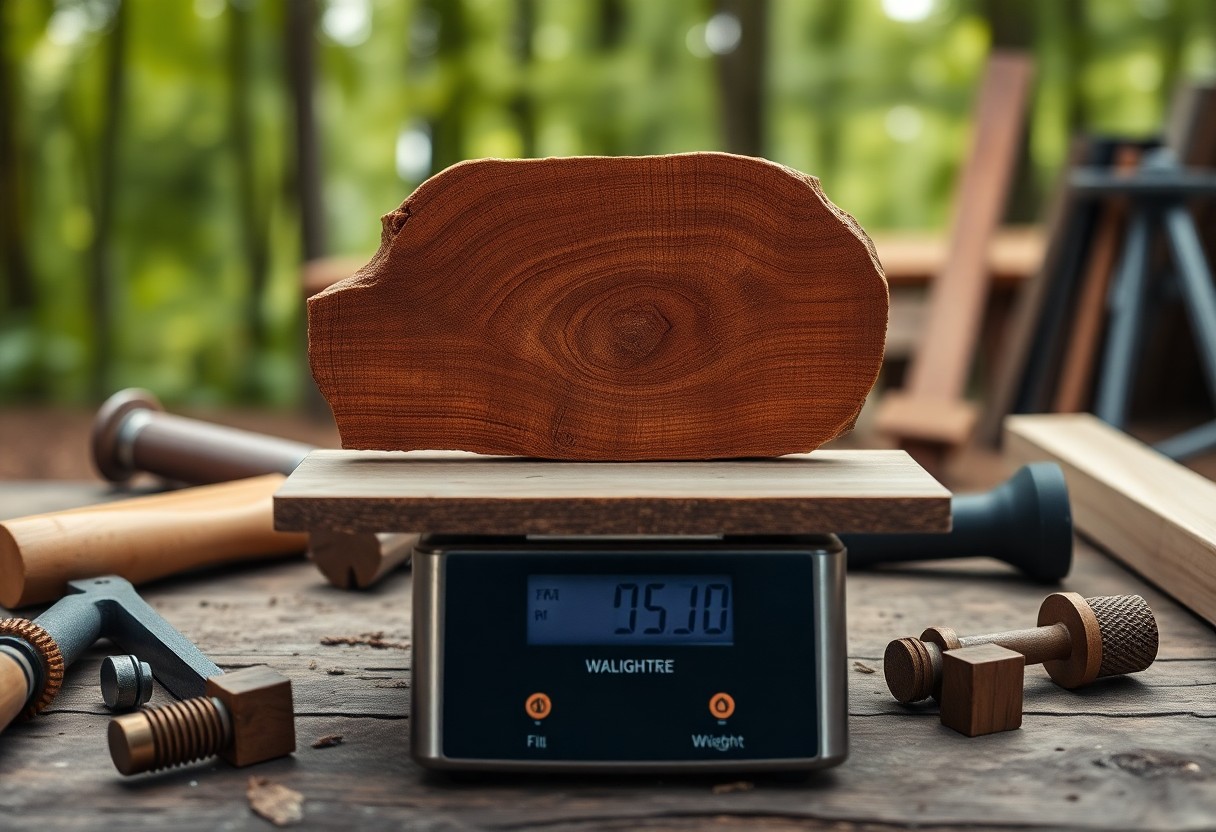You’re about to launch on a woodworking project, but you’re stuck on a fundamental question: how much does your wet wood weigh? This calculation is key to ensuring your project’s success, as it directly impacts the structural integrity and overall quality of your finished product. With the Wet Wood Weight Calculator, you’ll be able to accurately determine the weight of your wet wood, taking into account its species, moisture content, and dimensions.
By the end of this article, you’ll be equipped with the knowledge to make precise calculations and take your woodworking skills to the next level.
What is Wet Wood Weight Calculator?
To accurately estimate the weight of wood, you need to consider its moisture content. This is where the Wet Wood Weight Calculator comes in – a handy tool designed to help you determine the weight of wood based on its moisture level.
Definition and Purpose
Between calculating the weight of wood for construction projects and determining the moisture content for woodworking applications, the Wet Wood Weight Calculator serves as a reliable resource.
Its purpose is to provide you with an accurate estimate of wood weight, taking into account the varying moisture levels that can affect its density.
Importance in Various Industries
With its applications spanning across multiple industries, the Wet Wood Weight Calculator proves to be an indispensable tool.
From forestry and logging to woodworking and construction, this calculator helps you make informed decisions about wood procurement, transportation, and usage.
What you may not know is that the calculator’s importance extends beyond just weight estimation. In industries like woodworking, it helps you determine the optimal moisture levels for drying and processing wood, ensuring the final product meets quality standards.
In construction, it enables you to accurately calculate the structural integrity and load-bearing capacity of wooden structures. By using the Wet Wood Weight Calculator, you can optimize your wood-related projects and make data-driven decisions.
How to Use the Calculator
One of the primary advantages of our wet wood weight calculator is its ease of use. Simply follow the prompts to input your wood’s specifications, and the calculator will do the rest, providing you with an accurate estimate of its weight.
Inputting Moisture Content
Above all, it’s imperative to accurately input your wood’s moisture content. After selecting the type of wood you’re working with, enter the moisture content as a percentage. This value will significantly impact the calculator’s weight estimation, so ensure it’s precise.
Calculating Weight
Above the input fields, you’ll find the calculator’s output section. Here, you’ll see the estimated weight of your wet wood, displayed in pounds or kilograms, depending on your preferred unit of measurement.
Consequently, you can use this weight estimate to plan your project more effectively, whether that means arranging transportation, preparing storage, or calculating the resources needed for your build. With our calculator, you’ll have a better understanding of your wood’s weight, allowing you to make more informed decisions throughout your project.

Factors Affecting Wet Wood Weight
Once again, you’re about to investigate the world of wet wood weight calculation. But before you do, it’s necessary to understand the factors that affect the weight of wet wood.
These factors can significantly impact the accuracy of your calculations, so it’s vital to consider them. Here are some of the key factors to keep in mind:
- Moisture content
- Wood species
- Density
After understanding these factors, you’ll be well-equipped to make accurate calculations and get the most out of your wet wood weight calculator.
Moisture Content
One of the most significant factors affecting wet wood weight is moisture content. The amount of water present in the wood can greatly impact its weight, making it heavier or lighter depending on the level of moisture.
Wood Species
Behind every type of wood lies a unique set of characteristics that affect its weight. Different wood species have varying densities, moisture contents, and other properties that impact their weight.
Another important aspect to consider is that different wood species have distinct growth patterns, which can also influence their weight. For example, woods with more knots or twists may be heavier than those with straighter grains.
Density
Furthermore, density can vary greatly between different wood species, making it necessary to consider this factor when calculating wet wood weight. By understanding the density of the wood you’re working with, you can make more accurate calculations and get the results you need.
Applications of Wet Wood Weight Calculator
All industries that involve working with wood benefit from accurate weight calculations, and our wet wood weight calculator is an important tool for professionals and enthusiasts alike.
Forestry and Logging
One of the most significant applications of our calculator is in forestry and logging, where precise weight estimates are necessary for efficient transportation and storage of harvested timber.
Woodworking and Furniture Making
Before starting a woodworking project, you need to know the exact weight of the wood to ensure structural integrity and stability of your creation.
The weight of wood also affects the final product’s durability and performance, so using our calculator helps you select the right type and amount of wood for your project, saving you time and resources in the long run.
Benefits of Accurate Weight Calculation
Your business relies on precise calculations to thrive, and weight calculation is no exception. Accurate weight calculation ensures you’re prepared for transportation, storage, and sales, avoiding costly mistakes and inefficiencies. By knowing the exact weight of your wet wood, you can optimize your operations, reduce waste, and increase customer satisfaction.
Cost Savings
Between overestimating and underestimating weight, you risk losing money on transportation costs, storage fees, and inventory management.
Accurate weight calculation helps you avoid these unnecessary expenses, allowing you to allocate resources more effectively and boost your bottom line.
Efficient Logistics
To ensure smooth operations, you need to know exactly how much space and resources are required to transport and store your wet wood. Accurate weight calculation provides this critical information, enabling you to plan and execute logistics with precision.
Efficient logistics planning also means you can better manage your supply chain, reducing congestion and delays. With accurate weight calculation, you can identify the most cost-effective transportation methods, optimize your warehouse layout, and streamline your inventory management process. The result is faster delivery times, lower costs, and increased customer satisfaction.
Common Mistakes to Avoid
Not taking the time to double-check your calculations can lead to costly errors. When working with wet wood, accuracy is key, and even small mistakes can add up quickly.
Incorrect Moisture Readings
Along with faulty equipment, incorrect moisture readings can be caused by not calibrating your moisture meter regularly or failing to account for temperature and humidity fluctuations. Make sure you’re using a reliable meter and following the manufacturer’s instructions to ensure accurate readings.
Inaccurate Wood Density
Above all, inaccurate wood density values can throw off your entire calculation. You must use the correct density value for the specific type of wood you’re working with, as different species have varying densities.
A thorough understanding of wood density is vital when calculating the weight of wet wood. You should research the average density of the wood species you’re working with and adjust your calculation accordingly. This will help you avoid costly mistakes and ensure accurate results.
Summing up
Upon reflecting on the Wet Wood Weight Calculator, you’ve now got a solid grasp on how to accurately estimate the weight of wet wood.
You’ve learned to consider the species, moisture content, and volume of the wood, and how to plug those numbers into a simple formula. With this knowledge, you’re equipped to tackle your next woodworking project with confidence, knowing exactly how much weight you’re dealing with. Your calculations will be spot on, and your projects will be all the better for it.








